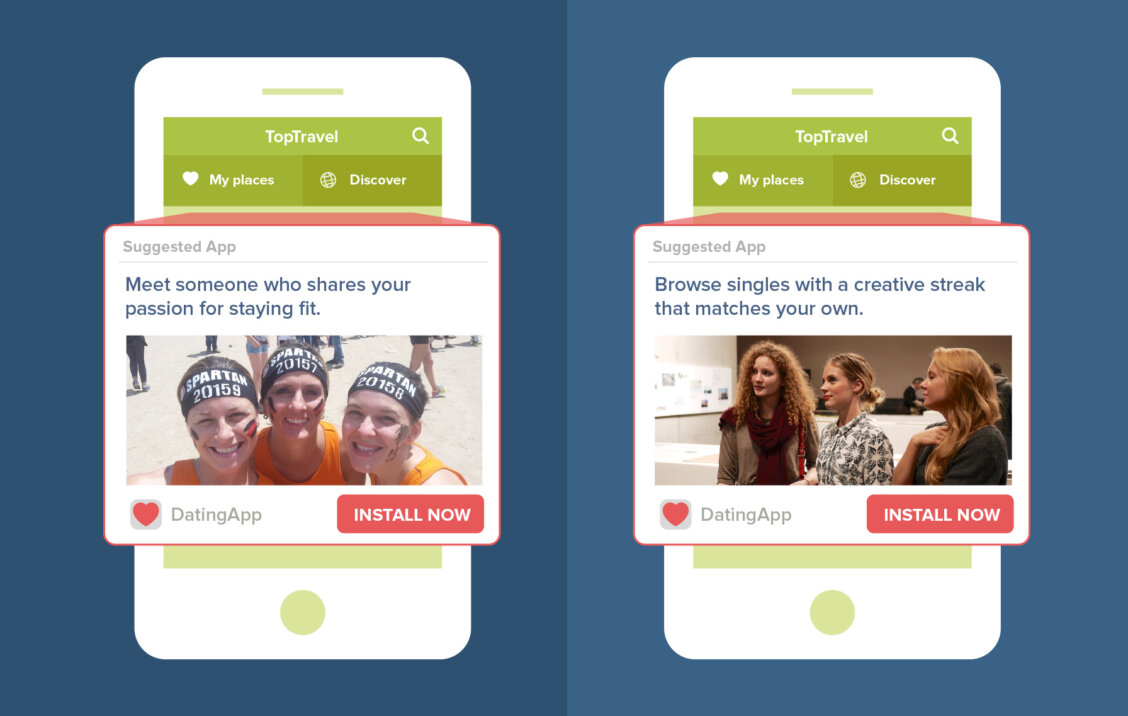
Why Simple Targeting is the Key to Mobile User Acquisition
As marketers, we have a ton of targeting options at our fingertips when running mobile user acquisition campaigns. At face value, the option to target down to the most minute details seems ideal, but more often than not, getting too niche will limit the performance of your campaign.
For example, in marketing the dating app AYI (Are You Interested), let’s say we’ve identified that a majority of our quality users are singles over 40 years old, from Wyoming, who love both dogs and chocolate chip cookies (who doesn’t?!). If running a user acquisition campaign on Facebook, we can easily target new users with that exact targeting criteria. We can build the “perfect” creative: An image of a happy couple playing with their dog, clever copy about finding “man’s other best friend,” and a catchy headline. We’re ready to run a killer campaign and drive a ton of new users to AYI.
Instead, the campaign falls flat. But everything was crafted to be exactly what the target audience is looking for. How could it fail?
What went wrong
For starters, AYI isn’t a dating app for dog lovers. Sure, dog lovers make up part of the audience, but that’s not our brand – this isn’t Must Love Dogs: The App.
In my example, the problem with the campaign is that the target audience is too small. We created a forced association between dogs and dating, and the creative doesn’t focus on AYI’s main offering. That typically leads to higher-than-expected CPIs, underspent budgets, and confusion for the end user. Developing a targeting and creative combination that delivers strong results is done by understanding the factors that make your audience your audience.
Determine your true target audience
To determine the right targeting parameters in a user acquisition campaign for a mobile dating app, it’s important to evaluate the underlying reasons why someone chooses to use the service. There are a few obvious ones that come to mind:
- They are single or divorced
- They’re seeking a partner in the short term
- They’ve been on at least a few dates in their lifetime
These filters are pretty generic to any online dating service but can act as good high-level filters when first starting to run campaigns. In order to refine the targeting, we need to consider what activities our ideal user may take part in, as well as brands they strongly associate with.
For example, if we found that a large portion of active subscribers are fans of wedding shows, which are closely associated with dating, targeting fans of wedding shows is likely to perform far better than people who love dogs.
Nail down the creatives
A product’s brand should always be conveyed in creatives. Sacrificing the brand in order to “stuff” keywords and visuals into creatives that are too narrowly targeted does more harm than good. Even if such ads drive app installs, you’re setting unrealistic expectations for the user’s app experience.
For example, if a user joined AYI through an ad for dog lovers but found that in their area there are very few dog lovers, odds are that user will quickly uninstall the app.
On the other hand, running an ad for AYI that targets wedding show fans is more likely to generate lasting quality users. By using an image of a man proposing to a woman with copy about meeting your dream spouse, we have a highly targeted ad that’s primed for success. It’s on brand and fits our target audience.
With the wealth of data and targeting options available, we have the opportunity to create highly relevant mobile marketing campaigns that truly speak to our core audience. However, misusing that information leads to complicated and inefficient campaigns that don’t showcase your app’s value. At AYI, we’ve found that the campaigns driving the highest level of performance combine strong, on brand messaging with simple, yet strategic targeting criteria.